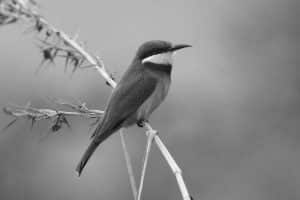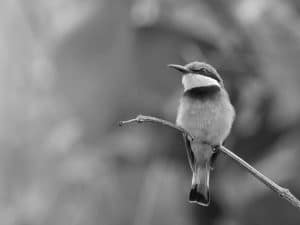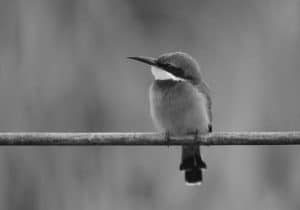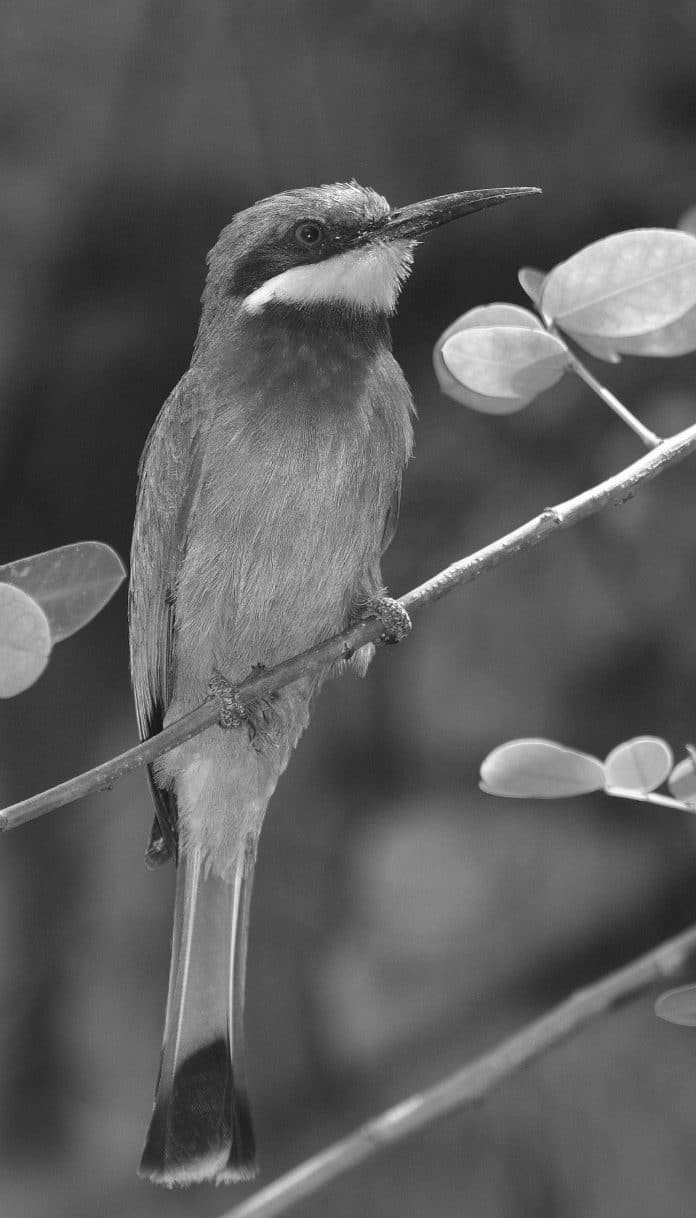Introduction to the Blue-Breasted Bee-Eater
Welcome to the captivating world of the Blue-Breasted Bee-Eater, a stunning avian species that graces the Tanzanian savannahs with its vibrant presence. The Blue-Breasted Bee-Eater in Tanzania, scientifically known as Merops variegatus, is a member of the bee-eater family and is renowned for its striking azure blue and chestnut plumage. These agile aerial hunters are a sight to behold as they soar through the skies, showcasing their remarkable agility and beauty. In this article, we will delve into the fascinating world of the Blue-Breasted Bee-Eater, exploring its habitat, behavior, conservation status, and cultural significance in Tanzania.
Habitat and Behavior of the Blue-Breasted Bee-Eater in Tanzania

The Blue-Breasted Bee-Eater is found in various habitats across Tanzania, including open woodlands, savannahs, and riverbanks. These delightful birds are highly social and are often observed in small flocks perched on branches or aerially foraging for their insect prey. Their acrobatic flight and swift movements make them a mesmerizing sight for birdwatchers and nature enthusiasts. The Blue-Breasted Bee-Eater’s diet primarily consists of bees, wasps, and other flying insects, which they catch mid-air using their sharp, slender bills.
In addition to their exceptional hunting abilities, Blue-Breasted Bee-Eaters are known for their intricate nesting behavior. They excavate burrows in vertical sandy banks, where they construct their nests and rear their young. During the breeding season, these charismatic birds engage in elaborate courtship displays, which involve aerial acrobatics and the exchange of food between mates. Their vibrant plumage and lively behavior make them a sought-after subject for wildlife photographers and birdwatchers seeking to witness their natural elegance in the wild.
The Spectacular Plumage of the Blue-Breasted Bee-Eater
One of the most striking features of the Blue-Breasted Bee-Eater is its resplendent plumage, which captivates the eye with its vivid hues of azure blue, chestnut, and subtle hints of green. The crown and nape of the bird are adorned with a rich chestnut color, which contrasts beautifully with the azure blue of its throat, breast, and wings. The underparts of the bird display a stunning blend of blue and turquoise, creating a mesmerizing palette of colors that shimmer in the sunlight.
The distinctive coloration of the Blue-Breasted Bee-Eater serves both functional and aesthetic purposes. The vibrant hues help these birds attract mates during the breeding season and also play a role in species recognition within their social groups. Additionally, the striking colors act as a form of camouflage, allowing the bee-eaters to blend into their natural environment and evade potential predators. The combination of beauty and practicality in their plumage makes the Blue-Breasted Bee-Eater a true marvel of the avian world.
Conservation Efforts for the Blue-Breasted Bee-Eater in Tanzania
As with many species of wildlife, the Blue-Breasted Bee-Eater faces various conservation challenges in Tanzania. Habitat loss due to human development, deforestation, and agricultural expansion poses a significant threat to the bee-eater’s natural environment. Furthermore, the use of pesticides and insecticides can have detrimental effects on the bee populations that serve as the primary food source for these magnificent birds. To address these concerns, conservation organizations and local communities have implemented measures to protect the habitats of the Blue-Breasted Bee-Eater and raise awareness about the importance of preserving their natural ecosystems.
Efforts to conserve the Blue-Breasted Bee-Eater include the establishment of protected areas and wildlife reserves where these birds can thrive undisturbed. Through habitat restoration initiatives and community-based conservation programs, stakeholders are working to safeguard the landscapes that are vital for the bee-eater’s survival. Educational outreach and sustainable land management practices are also being promoted to mitigate the impact of human activities on the bee-eater’s habitat. By fostering a harmonious coexistence between people and wildlife, conservationists aim to secure a brighter future for the Blue-Breasted Bee-Eater in Tanzania.
Best Places for Birdwatching and Spotting Blue-Breasted Bee-Eaters in Tanzania
Tanzania offers an array of prime locations for birdwatching enthusiasts to observe the Blue-Breasted Bee-Eater in its natural habitat. The country’s diverse landscapes, ranging from lush forests to open savannahs, provide ideal settings for encountering these enchanting birds. One of the top destinations for spotting Blue-Breasted Bee-Eaters is the Selous Game Reserve, a vast wilderness area known for its rich birdlife and pristine ecosystems. Here, visitors can embark on guided safaris and river cruises to witness the bee-eaters in action as they hunt for insects and engage in their captivating aerial displays.
The Tarangire National Park is another renowned hotspot for birdwatching, offering a mosaic of habitats where Blue-Breasted Bee-Eaters can be observed perched on tree branches or darting through the air. The park’s majestic baobab trees and water sources attract a diverse array of bird species, providing ample opportunities for photographers and nature enthusiasts to capture the bee-eaters in their natural surroundings. Other notable locations for encountering Blue-Breasted Bee-Eaters include the Ngorongoro Conservation Area and the Serengeti National Park, where these colorful birds contribute to the vibrant tapestry of Tanzania’s avian diversity.
Photography Tips for Capturing Blue-Breasted Bee-Eaters in Flight

Photographing the Blue-Breasted Bee-Eater in flight requires patience, skill, and an understanding of their behavior and habitat. To capture stunning images of these aerial acrobats, it is essential to position oneself in areas where the bee-eaters are known to frequent, such as open woodlands or riverbanks. A telephoto lens with a fast shutter speed is recommended to freeze the swift movements of the birds as they dart through the air in pursuit of their insect prey.
When composing shots of Blue-Breasted Bee-Eaters, it is important to consider the angle of light to showcase the iridescence of their plumage. Early morning and late afternoon lighting can enhance the vibrant colors of the bee-eaters, creating a luminous glow that accentuates their beauty. Patience is key when photographing these birds, as they display remarkable agility and may require multiple attempts to capture their graceful flight and dynamic aerial maneuvers. By immersing oneself in the natural rhythms of the bee-eater’s habitat and observing their behavior, photographers can seize the opportunity to document the splendor of these azure-winged marvels.
The Role of Blue-Breasted Bee-Eaters in Tanzanian Ecosystems
Blue-Breasted Bee-Eaters play a vital role in the ecological balance of Tanzanian ecosystems, contributing to the control of insect populations and the pollination of flowering plants. As voracious insect hunters, these birds help regulate the abundance of bees, wasps, and other flying insects, thereby preventing potential imbalances in local food webs. Their foraging activities also aid in the dispersal of seeds and contribute to the maintenance of plant diversity, as they visit various flowering species in search of nectar and prey.
In addition to their ecological contributions, Blue-Breasted Bee-Eaters serve as indicators of environmental health and the overall well-being of their habitats. Their presence reflects the availability of suitable nesting sites, foraging grounds, and the presence of diverse insect populations. By monitoring the populations and behaviors of these charismatic birds, researchers and conservationists can gain valuable insights into the state of Tanzania’s natural ecosystems and the impacts of environmental changes on wildlife. Recognizing the significance of the Blue-Breasted Bee-Eater in ecological processes underscores the importance of protecting their habitats and ensuring the sustainability of their populations.
Cultural Significance of Blue-Breasted Bee-Eaters in Tanzanian Folklore
In Tanzanian folklore and traditional beliefs, the Blue-Breasted Bee-Eater holds a special place as a symbol of beauty, agility, and natural harmony. The vibrant colors and graceful flight of the bee-eaters have inspired stories and cultural expressions that celebrate the enchanting presence of these birds in the landscape. In some local traditions, the Blue-Breasted Bee-Eater is revered as a messenger of good fortune and a symbol of resilience, embodying the spirit of endurance and adaptability in the face of life’s challenges.
Artistic representations of Blue-Breasted Bee-Eaters can be found in traditional crafts, music, and storytelling, reflecting the deep-rooted reverence for these avian wonders. Their presence in Tanzanian folklore serves as a reminder of the intrinsic connection between people and nature, highlighting the significance of coexisting with the natural world in a harmonious and respectful manner. By embracing the cultural significance of the Blue-Breasted Bee-Eater, communities are encouraged to appreciate and safeguard the biodiversity that enriches their lives and traditions, fostering a sense of stewardship for the natural heritage of Tanzania.
The Future of Blue-Breasted Bee-Eaters in Tanzania

As Tanzania continues to evolve and develop, the conservation of the Blue-Breasted Bee-Eater remains a critical endeavor to ensure the preservation of this iconic species for future generations. Through collaborative efforts involving government agencies, conservation organizations, and local communities, initiatives are being implemented to mitigate the threats facing the bee-eaters and their habitats. By promoting sustainable land use practices, raising awareness about the importance of biodiversity, and engaging in scientific research, stakeholders are working towards securing a sustainable future for the Blue-Breasted Bee-Eater in Tanzania.
Key to the conservation of the Blue-Breasted Bee-Eater is the active involvement of local communities and the integration of traditional knowledge and practices into conservation strategies. By empowering communities to participate in the protection of natural resources and promoting eco-friendly livelihoods, the well-being of both people and wildlife can be enhanced. Additionally, ecotourism initiatives that highlight the beauty and significance of the Blue-Breasted Bee-Eater can contribute to the economic prosperity of local populations while fostering a greater appreciation for the conservation of Tanzania’s natural heritage.
Conclusion: Preserving the Beauty of Azure Delight
The Blue-Breasted Bee-Eater stands as a symbol of natural splendor and resilience, captivating the hearts and minds of all who have the privilege of witnessing its aerial prowess. As these magnificent birds grace the Tanzanian savannahs with their azure delight, it is our shared responsibility to safeguard their habitats and ensure the continuity of their legacy in the wild. By embracing the cultural significance of the Blue-Breasted Bee-Eater, supporting conservation efforts, and promoting sustainable coexistence with nature, we can preserve the beauty of these avian wonders for generations to come. Let us cherish the azure delight of the Blue-Breasted Bee-Eater and strive to create a future where their vibrant wings continue to adorn the Tanzanian skies, inspiring awe and appreciation for the natural world.

































